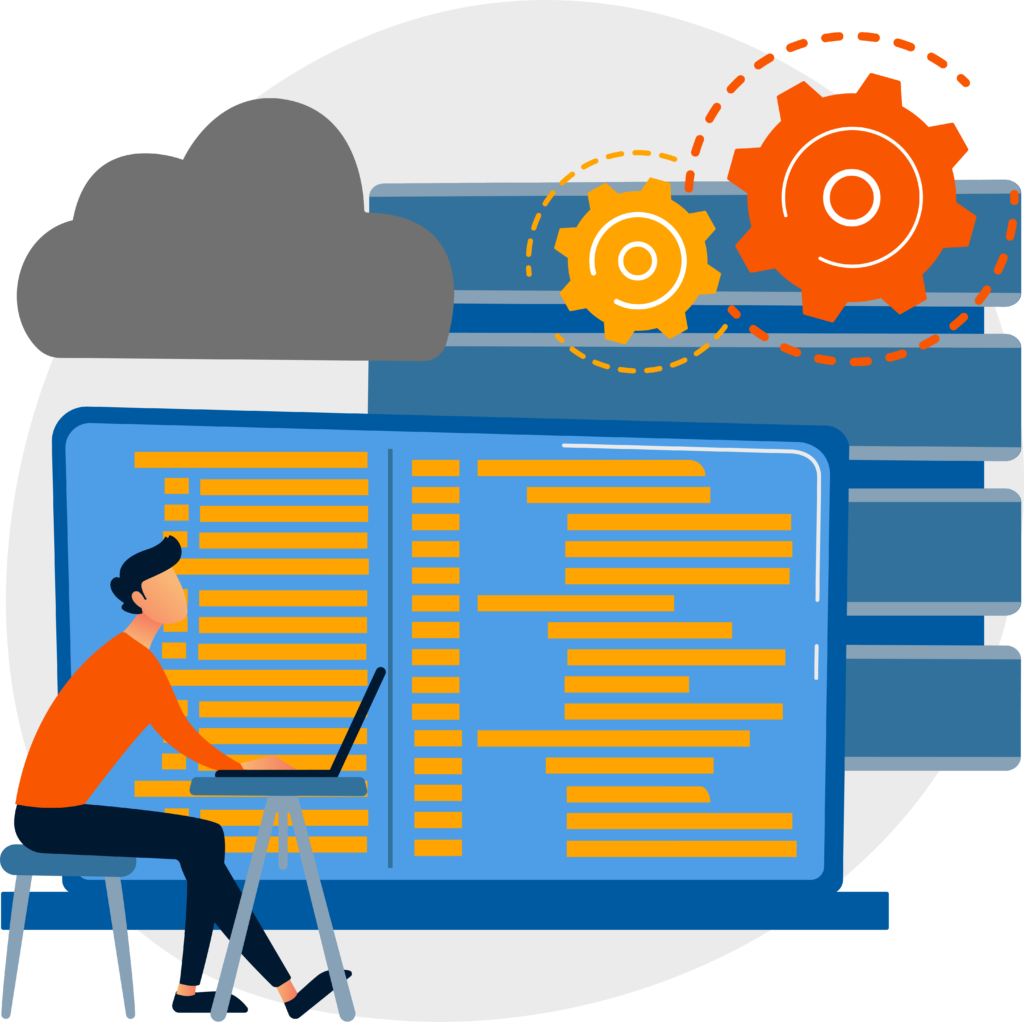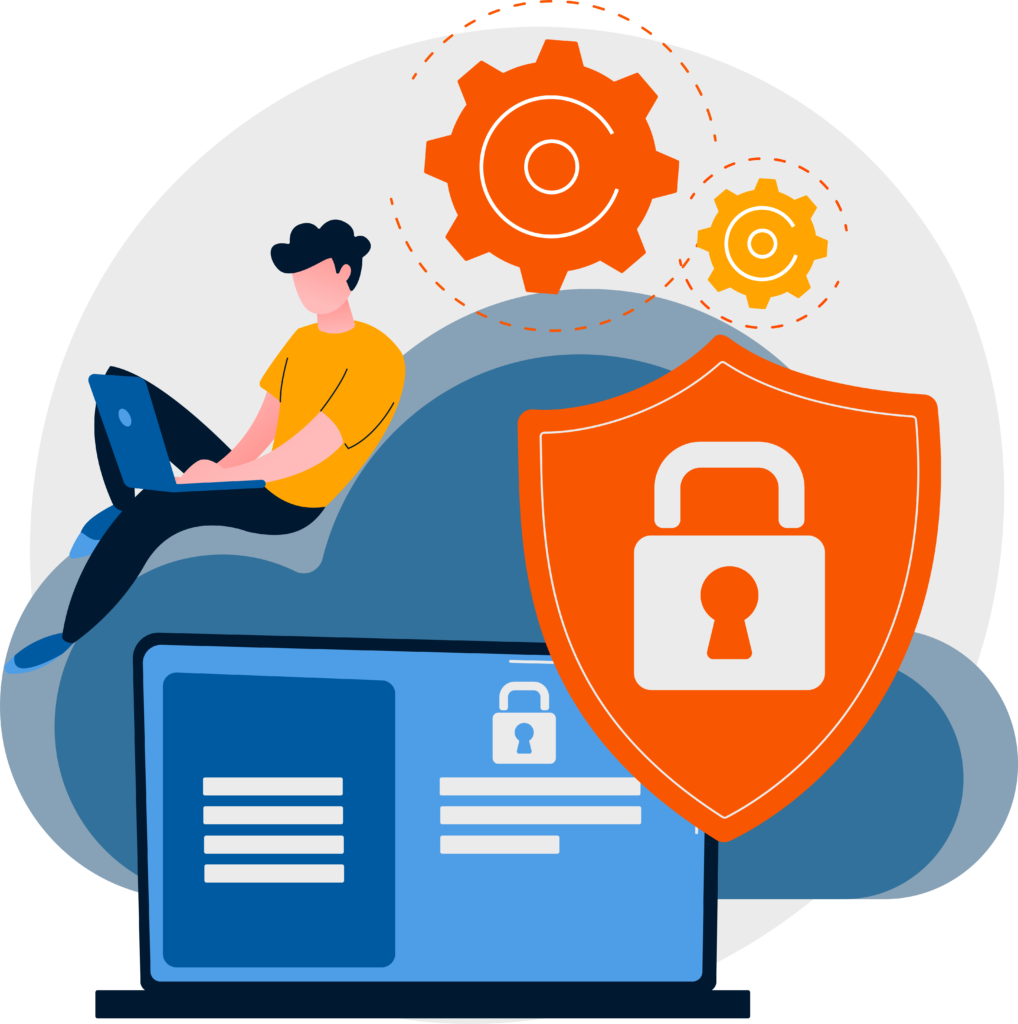Find Efficiency and Control IT Cost
Traditional IT departments are built on existing silos. Silos of job functions, technologies, and information, resulting in the purchasing of many systems, which then require integration, and ultimately, an increase in costs. A recent research report found 25 percent of large enterprises have eight or more network performance monitoring tools, and some have as many as 25. Suddenly, things are more complex and more expensive. As an IT director, this isn’t the direction you want to head.
For the past thirty years, IT departments have fought to tear down those silos. Face it, IT departments are cost centers. Budget constraints existed long before 2020, and right now many budgets are being slashed due to the ongoing pandemic and resulting economic impacts. It will be difficult, if not impossible, to find a balance between meeting your business needs without a supporting budget.
One way to reduce costs is to outsource IT to a consulting firm or Managed Service Provider (MSP). But rather than seeing jobs and teams outsourced, IT leaders will try to unify all of IT operations. With every silo using its own tools, it’s hard for someone in IT to have a holistic view of the entire enterprise. Lack of visibility means a lack of control, and at some point, tool consolidation becomes the new normal. Between idle resources and overprovisioning, wasted cloud spend exceeded $14.1 billion in 2019. One estimate had 40 percent of cloud instances sized at least one size larger than needed for their workloads.
Consolidation also allows for tighter integration between systems, resulting in great collaboration between teams. This results in a decrease in mean time to resolution, and ultimately lower costs when outages happen. But consolidation alone isn’t enough. IT departments also must look to streamline support operations through automation.
This whitepaper will focus on the following pillars: application performance monitoring (APM), database monitoring, infrastructure monitoring, network monitoring, security, and IT service management (ITSM).

Application Performance Monitoring (APM)

Key Challenges
Adding a layer of complexity is increasing deployment—or inheritance—of open- source products and technologies operated directly by IT teams. IT pros find them- selves managing, monitoring, and securing production workloads via interfaces designed for developers, not operators. APIs and software actuation can be fantastic solutions for eliminating routine tasks but require at least some programming. That’s great for managing the handful of apps representing the bulk of operator workloads but isn’t practical for the hundreds or thousands of less frequent or novel tasks for which IT is also responsible. Because IT process-focused features always seem to come late in innovation cycles, teams may be left on their own to understand the intricacies of many rapidly evolving projects and create their own tools from scratch. That adds significant complexity from skills gap alone, just as it would be if developers were expected to have expertise for dozens of codebases, not just the handful they work on at any one time.

Approach to Solve
Organizations are increasingly adopting monitoring and management solutions to provide this system expertise for multiple open-source technologies and modern application architectures (containers/microservices) out of the box. By removing the automation complexity, they allow IT teams to focus on getting existing application, architectural, and operations complexity under control without an expensive and time-consuming training investment. Better, it helps reduce the need for the additional management complexity of further staff specialization. There’s not enough time to wrangle increasingly distributed systems and new platforms, much less mirrored complexity in the products used to manage them. With a little investment in solutions, you can manage critical services as if they were still in neat racks of matching servers, whirring away in neatly arranged, well- cooled rows. And perhaps that’s the key, because that’s also hopefully how your customers imagine them.

Database Monitoring

Key Challenges
Business applications are built on data. This data is almost always stored inside of a database. That makes the database a mission-critical asset, and one you need to troubleshoot quickly when problems arise. In today’s cloud-native, distributed application world, troubleshooting database performance issues is difficult. There are many layers between a user and their data. There’s the network storage, virtualization, operating system, and the data- base engine itself. All areas where bottlenecks occur, causing a poor experience for your end users.

Approach to Solve
What’s needed are insights to the database engine, the operating system, the virtualization layer, and storage. The solution is therefore to collect the relevant metrics from each layer. After all, you don’t want your DBA to spend eight hours tuning a query when the root cause is overloaded storage, or a bad configuration setting on the VM host.Metric collection is only part of the solution. You also need to see the correlation between each layer over a period of time. And if the issue is indeed inside the database, your monitoring solution should provide actionable steps for you to take to help solve the problem.

Infrastructure Management

Key Challenges
There are various and valid reasons why a modern organization would use multiple cloud providers instead of “just” one. Unfortunately, they come with loads of challenges, too. Connectivity is one of the first roadblocks in the multi-cloud journey.
In a legacy network, it’s a simple task to maintain routing paths and tell load balancers what application speaks to another application. But an organization doesn’t own the network in the cloud, and each vendor uses a different set of load balancers. Each provider offers proprietary VPN solutions to connect the cloud instance to an on-prem environment, and those are mature solutions. And as soon as another cloud provider joins, it gets complicated. There is a simple truth in monitoring hybrid infrastructures which also holds in multi-cloud scenarios— you need more than up/down information of the connections between locations. Multi-cloud scenarios are ripe for sprawl and unexpected costs with regards to egress and licensing.

Approach to Solve
Multi-vendor infrastructure solutions for monitoring and managing your on-premises compute, network, and storage architectures don’t typically integrate with one another. IT pros need a vendor-agnostic solution to monitor across your IT infrastructure, whether it be on premises, in the cloud, or a combination.
A solution capable of analyzing the path an application takes over various private and public nodes, and also collect enough information to gain intelligence for optimization, can clarify visibility and keep the mean time to resolution as low as possible. IT asset management is a must these days, providing insights on how to reduce sprawl and save money. Organizations need solutions to assure the health and configuration of physical and virtual servers, containers, private cloud, storage, and network infrastructure across hybrid IT environments.

Network Management

Key Challenges
Networks are the heart of everything we do in IT. Networking is the one aspect of IT has never (and likely will never) be made obsolete. Networks have grown in both size and complexity—largely because the organizations they are a part of have grown in equal measure.
The devices making up “the network” are varied as well. Corporate LANs accept more and more radical devices—from desktops and laptops hard-wired into ports to ubiquitous Wi-Fi in office areas. Today’s networks include complex devices playing key roles in the network but can be challenging to monitor and manage.

Approach to Solve
Networks are complex but managing your network doesn’t have to be. As much as any other subsystem within the corporate infrastructure, your network must be built with the ability to flex when necessary. Most network monitoring tools are only good until you hit your firewall. After that, it’s all a mystery. It’s hard to know what’s happening with your network when half of it is outside your control. Your network monitoring solution should understand the delivery health of cloud services and display critical hop-by-hop analysis and visualization along the delivery path. You need to know who and what’s connected to your network, and when and where they’re connected.

Security

Key Challenges
Recent events have increased the number of endpoints as employees have shifted to working from home. As the number of endpoints increases, so do the number of attack vectors. Your network is your first line of defense for keeping your systems secure.
That means you need to know everything about your network. Every device, router, and switch must be inventoried. You must discover if any device needs a security patch. And then you need a way to deploy those patches or roll them back. This is cumbersome when you have thousands of devices in your domain. But it’s a necessary task to make certain your network devices remain in compliance.
As your environment increases in complexity so does your ability to perform config- uration and patch management on work-owned devices deployed to home offices.

Approach to Solve
Today’s complex business world requires every person stay on top of security, privacy, and compliance. You may not have been hired as a security engineer, but everyone on the IT ops team must think and act like one. It helps when you have a monitoring solution with the ability to identify, detect, protect, respond, and recover from security threats such as malware and ransomware.
The products you use to process, and correlate log data should have functionality to automate actions, provide forensic search options, and support tie-ins with your monitoring software as well as your service desk. These are key to maintain- ing data integrity, problem-solving, and successfully deterring business attacks. Automation is a must, eliminating the hand-holding necessary for configuration and patch management.
The more options your team has to reach a “single pane of glass” concept, the more efficient your IT pros will be at handling attacks and other critical events.

IT Service Management

Key Challenges
The service desk is a central hub for your organization, uniting visibility and communication between internal service providers and employees. It also serves as a mechanism to drive digital transformation and innovation to organizational processes. While there are benefits to leveraging an IT service management (ITSM) solution, we know IT faces challenges when honing service management goals and strategies.
Two top-of-mind practices are ITIL change enablement and self-service. Both can help amplify organizational collaboration and shared value through the service desk.

Approach to Solve
Tackling change enablement helps IT teams to better manage their people, time, and assets. Using your ITSM platform to facilitate the process provides an outlet for change documentation and collaboration—ensuring your team is better equipped to plan for, respond to, and improve on the changes in your organization. And when coupled with automation of tasks such as user provisioning, ticketing, and building a knowledge base, your service desk becomes a keystone to efficient IT operations.
When it comes to your service desk, the service portal can host self-service resources for your employees. Knowing your users’ habits and their methods of engagement plays a key role in the design of your portal. If your employees tend to rely on email or communication channels, like Slack or Teams, chances are they are looking for a convenient method to submit requests or find answers to their issues. Time is valuable to your employees. Ensuring your portal is easy to access and intuitive to use will help users to adopt the service portal as part of their routine.
Growing your communication footprint enables you to meet your employees where and how they work.
Summary
It’s not the cost of buying the puppy, it’s the cost of feeding the puppy. Trying to “get your money’s worth” by implementing an IT infrastructure solution in all the wrong places can add up—fast.
The world of IT grows more complex with each passing day, week, month, and year. We manage more things today than we did yesterday. And tomorrow, we’ll be asked to take on more. More devices, more applications, more data, in more locations.
So much more that it comes to the point you have to make a choice. You can either spend the time and money trying to integrate a disparate set of monitoring tools or purchase a set of integrated solutions. But by using a network infrastructure monitoring and management suite the way it’s designed to work, you can benefit your organization and actually get your money’s worth.
SolarWinds has developed a suite of solutions built to provide cost savings and efficiency at scale by taming applications and fractured complexity with a unified management and automation approach. Our products support the integration of all areas of IT, giving complete visibility. Network performance monitoring, IT Service Management (ITSM), application performance monitoring (APM), database and application monitoring, and more. All integrated, providing full-stack insights into every layer in your infrastructure.
With SolarWinds, you have the ability to automate tasks to help IT pros at every layer. SolarWinds solutions are proven to help your company optimize costs, reduce risk, and ultimately grow revenue. And with SolarWinds, you can do it and get immediate value without breaking the bank.
Share this blog post on social media!
Contact us for detailed information about IT Processes!

